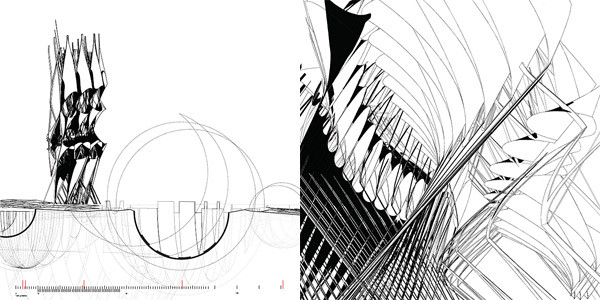
Thicket

A full-scale installation and exhibition by CITA.
In the spring of 2010 we were invited to participate in the Lisbon Architecture Triennale at the Berado Museum . Under the theme “Let's Talk About Houses” we were asked to reflect on how the house and the privacy of dwelling suggests the idea of the societal and through this the city. We were inspired by this suggestion of connectivity between the private and the public, the inner and the out, theintimate and the shared.
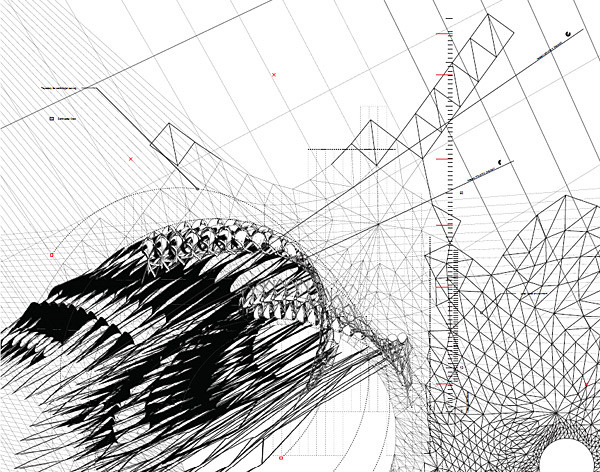
The invitation asked us to consider
"Architecture is seen from the point of view of its social and collective hubs, starting from the principle that it is not only an essential component in the construction of citizenship and the enriching of collective life, but also that this deeper insight is possible only on the basis of a creative and poetic understanding of the discipline. In architecture, form and aesthetics are poetically linked to the real, the experiential space, and the construction of new and better ways of collectively experiencing the city. For this reason, the theme of the house is, at the same time, a bridge connecting us to our first and formative experience of space, as well as a powerful metaphor for inhabiting the world that lies at the centre of the relationship between intimacy and community. Lisbon Triennale 2010"
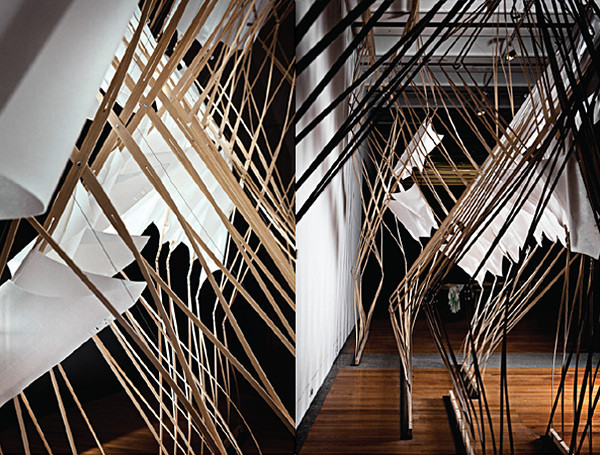
The project is made of three parts: the installation, the table and the drawing. Each of the three parts reflects upon the making of a soft space in which the materials and the structures are moving. The project asks how architecture could be imagined through an idea of the soft and the pliable. Engaging material through computation the works define soft on a series of parallel levels that twine in and amongst each other. Soft is a tectonic inquiry into the adaptable, the crafted and the motile as well as a cultural question into what a home could be.
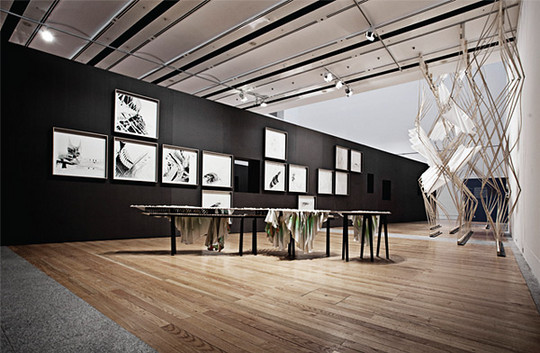
As a conversation between the tent as a primary construction of shelter and the tapestry as a highly encultured tradition of understanding inhabitation the project shown here ask how textiles can be seen as a media for a transformative architecture. In Thicket the installation asks how textile principles of weaving and pleating can define a flexible and breathing architecture destabilising the relationship between subject and space. In the table the surface of the domestic, the wallpaper and tablecloth, embeds the poetics of the afar allowing us as inhabitants to playfully encounter that which is other than here.
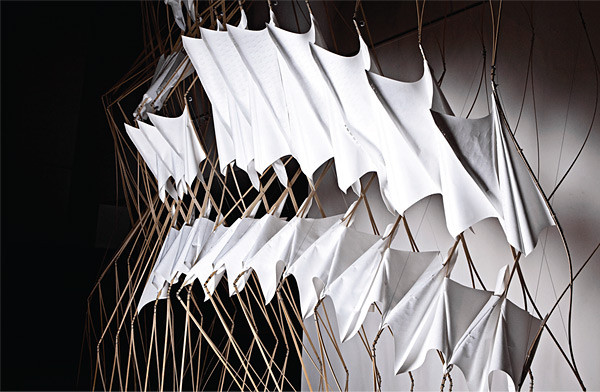
A soft tectonic
Thicket investigates how to use textile concepts of friction and tension for tectonic structures of architectural scale. As a wall membrane, Thicket explores the making of a pleated structure. Thicket is made of ash slats braced together by steel joints. As a friction based structure each slat is bent into shape pressing against each other and creating an internal friction. In Thicket each single member is inherently weak. The load forces move through a field of friction based interconnectivity by which the overall structure becomes stiff. This integral weakness allows the structure to retain a measure of pliability or softness allowing it to adjust to changes in its environment or in load.
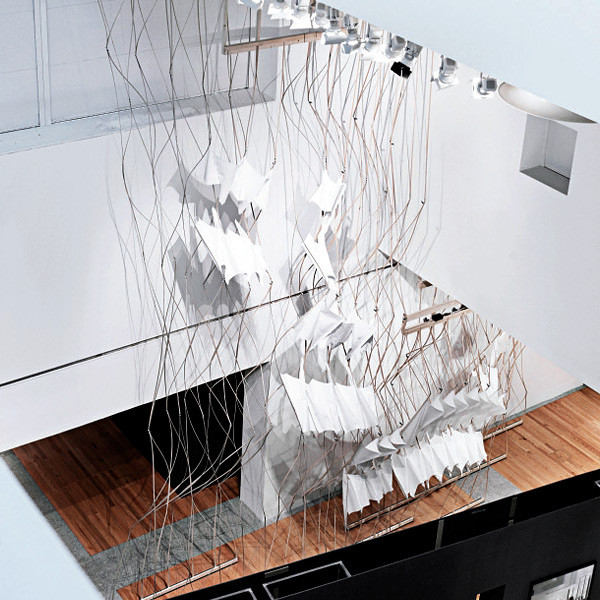
Thicket makes use of the material performance of wood. Cutting the slats from ash timber we make use of the particular straightness of ash grain which in turn allows us work with a minimal thickness and therefore a high degree of pliability. In Thicket we examine the idea of soft tectonics through an adaptable structural system. By continually adjusting the tensions wires that run through the structure, Thicket is animated. The tension wire are connected to a simple pulley system that alternately tightens and relaxes the wire creating an internal rhythm of expansion and contracting, inhaling and exhaling in resonance with its inherent material performance.
